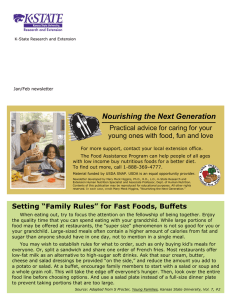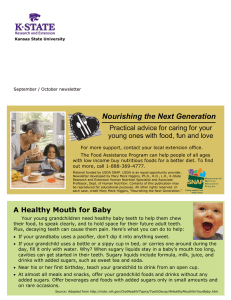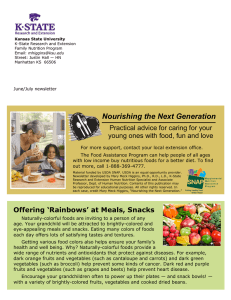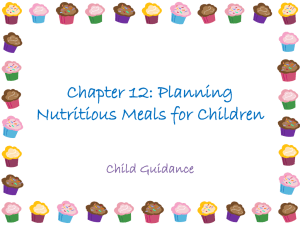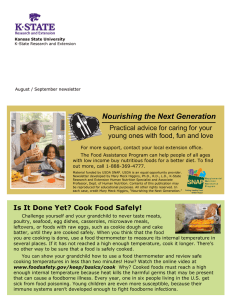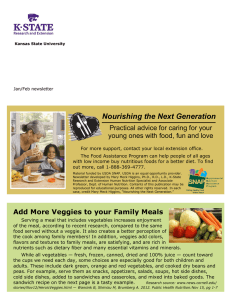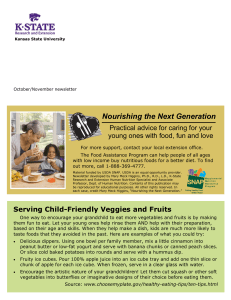Nourishing the Next Generation Practical advice for caring for your
advertisement
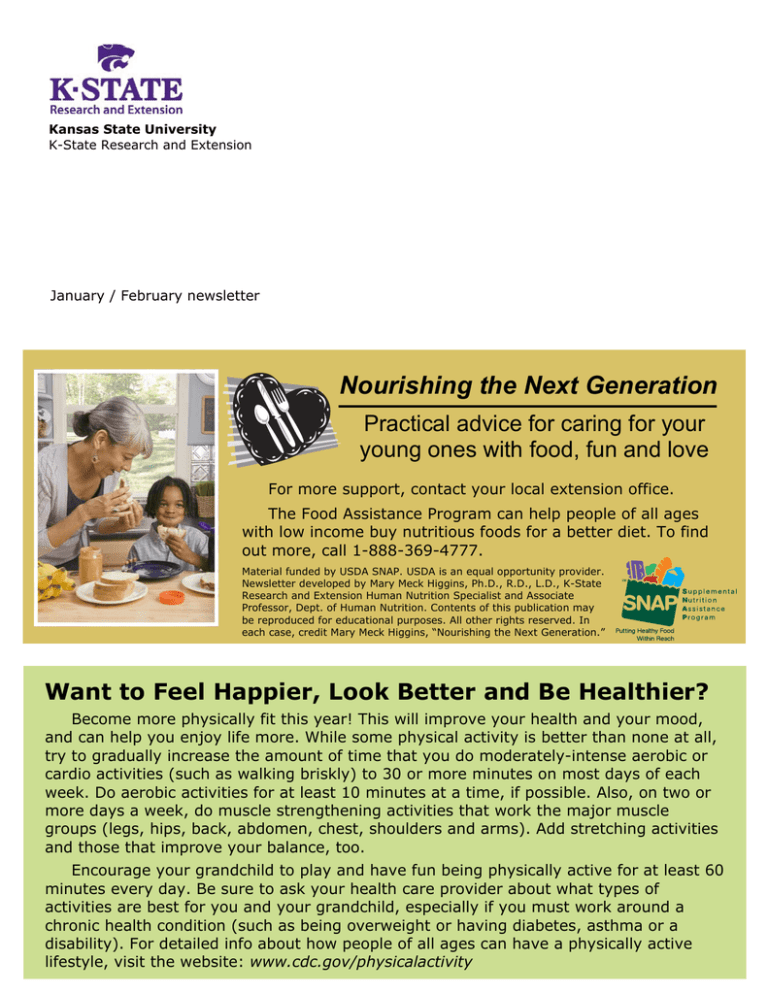
Kansas State University K-State Research and Extension January / February newsletter Nourishing the Next Generation Practical advice for caring for your young ones with food, fun and love For more support, contact your local extension office. The Food Assistance Program can help people of all ages with low income buy nutritious foods for a better diet. To find out more, call 1-888-369-4777. Material funded by USDA SNAP. USDA is an equal opportunity provider. Newsletter developed by Mary Meck Higgins, Ph.D., R.D., L.D., K-State Research and Extension Human Nutrition Specialist and Associate Professor, Dept. of Human Nutrition. Contents of this publication may be reproduced for educational purposes. All other rights reserved. In each case, credit Mary Meck Higgins, “Nourishing the Next Generation.” Want to Feel Happier, Look Better and Be Healthier? Become more physically fit this year! This will improve your health and your mood, and can help you enjoy life more. While some physical activity is better than none at all, try to gradually increase the amount of time that you do moderately-intense aerobic or cardio activities (such as walking briskly) to 30 or more minutes on most days of each week. Do aerobic activities for at least 10 minutes at a time, if possible. Also, on two or more days a week, do muscle strengthening activities that work the major muscle groups (legs, hips, back, abdomen, chest, shoulders and arms). Add stretching activities and those that improve your balance, too. Encourage your grandchild to play and have fun being physically active for at least 60 minutes every day. Be sure to ask your health care provider about what types of activities are best for you and your grandchild, especially if you must work around a chronic health condition (such as being overweight or having diabetes, asthma or a disability). For detailed info about how people of all ages can have a physically active lifestyle, visit the website: www.cdc.gov/physicalactivity Nourishing the Next Generation Practical advice for caring for your young ones with food, fun and love Plan for Nourishing Snacks Use healthful snacks to help your grandchild meet his or her nutritional needs. Pre-school youngsters, especially, need snacks because it's hard for them to get the nutrients that they need from just three meals a day. Plan to serve snacks that include two or more food groups, such as grains with fruits, milk or protein, or veggies with cheese. Examples include graham crackers with banana slices, cooked oatmeal with milk, whole grain bread with slices of a cooked egg, and a Source: www.choosemyplate.gov/preschoolers.html baked potato or steamed broccoli with cheese. Reflecting on New Year's Resolutions In the new year ahead, will you be trying to spend more time with your family and friends? Or perhaps trying to help your family make more healthful meal and snack choices? If you do, you can have a very positive life-long influence on them! A goal to cover both of these resolutions for the new year could be to prepare more meals at home. As often as possible, cook together. Strive to serve vegetables, fruits, whole grains, lean protein and dairy at each meal and to limit foods and beverages with added sugars. People living in the U.S. currently eat and drink about one-third of their calories away from home, and spend about half of their food dollars on foods prepared outside the home. That's bad news, since restaurant meals typically cost more and have more calories, but fewer healthful nutrients, than a similar meal prepared at home. When people eating in restaurants can see how many calories are in each menu item, many of them order meals with fewer calories. Nutrition facts about restaurant foods and beverages are scarce now, which limits the ability to make informed choices when ordering. But the Food and Drug Administration recently ruled that places selling restaurant-type foods will have to clearly post the number of calories that are in their menu choices by the end of this year. And you will be able to ask for other nutrition information, too, such as the amount of fat, sodium, cholesterol and carbs. (Not covered by this new rule are schools, restaurants with less than 20 locations, and foods that are meant to be shared.) To help your family become healthier, and to save money, limit the number of times that you buy restaurant-type foods. And when you do buy them, plan to put this new calorie and nutrient information when it becomes available to work, by using it to order more healthful foods. Source: www.fda.gov/Food/IngredientsPackagingLabeling/LabelingNutrition/ucm217762.htm Kansas State University Agricultural Experiment Station and Cooperative Extension Service, Manhattan, KS. K-State Research and Extension is an equal opportunity provider and employer. Kansas State University, County Extension Councils, Extension Districts and the U.S. Department of Agriculture Cooperating.


